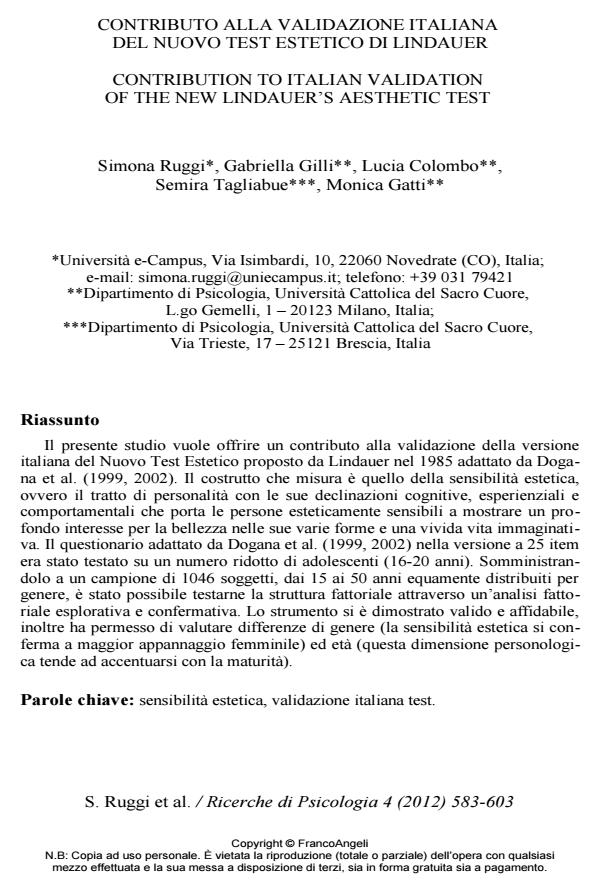Contribution to italian validation of the new lindauer’s aesthetic test
Journal title RICERCHE DI PSICOLOGIA
Author/s Simona Ruggi, Gabriella Gilli, Lucia Colombo, Semira Tagliabue, Monica Gatti
Publishing Year 2013 Issue 2012/4
Language Italian Pages 21 P. 583-603 File size 244 KB
DOI 10.3280/RIP2012-004001
DOI is like a bar code for intellectual property: to have more infomation
click here
Below, you can see the article first page
If you want to buy this article in PDF format, you can do it, following the instructions to buy download credits

FrancoAngeli is member of Publishers International Linking Association, Inc (PILA), a not-for-profit association which run the CrossRef service enabling links to and from online scholarly content.
The aim of this study is to offer a contribution to the validation of the Italian version of the New Aesthetic Test proposed by Lindauer in 1985 and adapted from Dogana et al. (1999, 2002). The test measured aesthetic sensibility, a personality trait which includes cognitive, experiential, behavioral and aesthetically sensitive dimensions, shown by individuals with a deep interest in beauty in its various forms and with a vivid imaginative life. The questionnaire adapted from Dogana et al. (1999, 2002) in a 25-item version was tested on a small number of adolescents (16-20 years). In this research a sample of 1046 subjects, aged 15 to 50 years and equally distributed by gender, filled in the scale. The factor structure was checked by an exploratory and a confirmatory factor analysis. The instrument proved to be reliable and valid; it also allowed us to evaluate gender differences (aesthetic sensitivity is higher in females) and age (aesthetic sensitivity increases with age).
Keywords: Aesthetic sensibility, Italian validation test.
- Riflessivita, attivita grafico-pittoriche e arte: un circolo virtuoso Gabriella Gilli, in RICERCHE DI PSICOLOGIA 3/2016 pp.423
DOI: 10.3280/RIP2016-003011
Simona Ruggi, Gabriella Gilli, Lucia Colombo, Semira Tagliabue, Monica Gatti, Contributo alla validazione italiana del nuovo test estetico di lindauer in "RICERCHE DI PSICOLOGIA " 4/2012, pp 583-603, DOI: 10.3280/RIP2012-004001